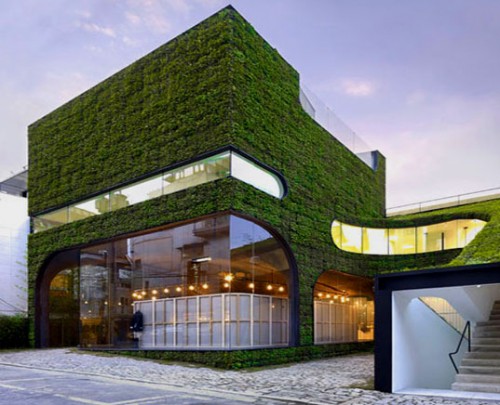Living building is the term used to indicate residential or official structures that are comparatively eco-friendly than traditional constructions. While any building that incorporates even one of the Green construction techniques, features or technology can be called a Green building, living buildings are those structures in which majority of the features, incorporated technology and used materials are sustainable and the method that was adopted for construction was also eco-friendly. The United States and some other developed countries have formal government or non-government authorities to encourage, monitor and/or recognise sustainable construction projects. There are certain parameters that are formulated to evaluate the sustainability of a structure.
Eco-friendly Materials
The concept of Green buildings demands that every material from which the buildings are made of remain eco-friendly so that even if the construction is not highly sustainable, it’s not hazardous. The construction of living buildings demands extended research on the materials that are used in the project. Not only the end-product should be eco-friendly, but it must be produced by sustainable means too. The metals, concrete, wood, etc. should not have negative impact on the environment.

Energy Efficiency
A Green building is one that depends less on conventional energy resources and is capable of generating its own power to some extent. However, the growing concern over drain-out of mineral and oil reserves has further raised the bar for conceptualisation of even greener means of construction. The Net Zero building or the living building concept is the result of it. A Net Zero building is a structure that consumes no more energy than what it can produce. In other words, a construction that is equipped to generate as much energy as required by it by sustainable means is called a Living Building. Typically, living buildings are equipped with solar panels, geo-thermal or other cooling and heating mechanism, natural-lighting system, CFLs or LED and energy-efficient technology.
Water Harvest
Rain water harvesting is the simplest and the most popular method that most living buildings have. However, mere rain water harvesting is not considered as optimum for a living building, but these kinds of constructions are also expected to have in-house recycling plants to make used water reusable. Such features make a structure truly sustainable even in regions with water scarcity. Moreover, the waste water that cannot be recycled can still be used to irrigate on-premise gardens. All this ensures that maximum amount of water is utilised and only hazardous portion of it is drained out.
Gardens
Highly efficient living buildings should have gardens not only to provide open space but maintain the air quality, sound level and temperature in the premises as well. Some plants are good absorbents of sound, while some filter air pollution effectively, or some have the capacity to reduce heat and cold during summer and winter respectively. Such diversity in plant kingdom is exploited in Green construction projects to improve the efficiency of eco-friendly technology incorporated to the building. Terrace gardens are effective in absorbing the heat. The Urban Agriculture is very sustainable choice for Green residential projects.

COMMENTS